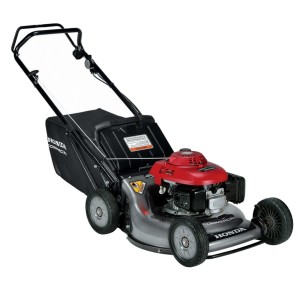 Once the summer begins drawing to a close, many homeowners turn their attention from lawn maintenance to mower maintenance. Getting ready for long-term storage of mowing equipment means it’s time to clean, perform engine oil changes, and proceed through any number of tasks that will reduce the likelihood of mower damage and ensure a smooth start to the following spring lawn care season. Getting these tasks done might seem daunting at first, especially to those new to push mower ownership, but it’s actually pretty easy to prepare the mower for effective, safe storage away from the winter elements until warmer weather demands that it be placed back into regular action.
Once the summer begins drawing to a close, many homeowners turn their attention from lawn maintenance to mower maintenance. Getting ready for long-term storage of mowing equipment means it’s time to clean, perform engine oil changes, and proceed through any number of tasks that will reduce the likelihood of mower damage and ensure a smooth start to the following spring lawn care season. Getting these tasks done might seem daunting at first, especially to those new to push mower ownership, but it’s actually pretty easy to prepare the mower for effective, safe storage away from the winter elements until warmer weather demands that it be placed back into regular action.
1. Cleaning the Equipment
The mower should be thoroughly cleaned before it’s placed into winter storage. Generally, this breaks down into three key areas:
– The Engine: Cleaning the engine should be done by hand, with a damp cloth and a mild detergent. The engine should be dried off as soon as the cleaning process is finished, in order to prevent corrosion that could limit its longevity.
– The Grass Bag: Storing clippings all summer can leave behind quite a bit of dirt. Clean and spray the bag with a garden hose and hang it up to dry. Only reinstall the bag when it has fully dried.
– The Cutting Deck: Turn the fuel valve to “off” and disconnect the spark plug, then spray the cutting deck until any remaining clippings and residue have been removed from the surface. Dry the cutting deck to prevent corrosion.
2. Charging the battery
Many Honda push mowers come with a battery, as well as a charger for the battery, and the company recommends that this battery be charged both before and after an extended period of storage. Use a wall outlet and give the battery several hours to sufficiently charge before reinstalling it.
3. Fuel Concerns
There are two ways to handle remaining gasoline. If the mower is going to be stored for fewer than 90 days, a simple fuel stabilizer should be added to the fuel so that it does not oxidize or deteriorate over that time period. While this is a great solution for shorter storage periods, those with longer winters will not be able to simply add stabilizer. If the mower will be unused for more than 90 days, turn the equipment on and allow it to run until it’s out of fuel. Store the equipment with no fuel remaining in the engine.
4. Engine Oil
Prior to storage, a full engine change should be completed. Drain all oil from the mower into an approved disposal container, and get rid of it in an eco-friendly way. Refill the oil to the recommended “fill” line on the dipstick, using only the type of oil recommended in the push mower’s user manual.
5. Engine Cylinder Maintenance
The engine cylinder can suffer a significant amount of damage if it’s not properly maintained before long-term mower storage. Before starting cylinder maintenance, remove the spark plug to ensure safety. To make sure that no damage occurs during the winter, pour approximately 2 tablespoons of regular engine oil into the cylinder. To ensure that the cylinder is properly lubricated and protected, pull the starter grip several times. This will distribute lubricant throughout the cylinder and reduce the risk of sticking or corroding during the winter.
Reinstall the spark plug properly, and then pull the starter grip again. Pull the grip only lightly, until resistance is felt. This process will ensure that the valves within the cylinder are closed, further safeguarding the cylinder and keeping distributed lubricants in place until the spring mowing season.
6. Handlebar Folding
Handlebars should be folded downward so that the mower can be easily stored in a compact space without being overly intrusive. Before folding the handlebars, make sure to remove the grass bag from the mower completely. Keep the bag itself in place on the frame, but set the frame aside. Next, unlock the handlebar adjustment knobs on either side of the mower so that the handle can move freely. Push the handlebars forward, but also make sure that the cables attached to the handlebars aren’t getting caught on the engine or any other mower parts.
Get OEM Parts for Storage and Maintenance By Visiting HondaLawnParts.com
Whether it’s regular maintenance throughout the summer or storage preparations made toward the season’s end, many homeowners find that they need the occasional OEM replacement part to keep their Honda push mower in excellent condition. HondaLawnParts.com can help with any replacement parts required. The website features a parts lookup tool that filters available OEM parts by the engine manufacturer, the equipment model number, or the specific part number that needs to be replaced. This makes it easy to find the perfect parts and quickly maintain the mower throughout the year.
